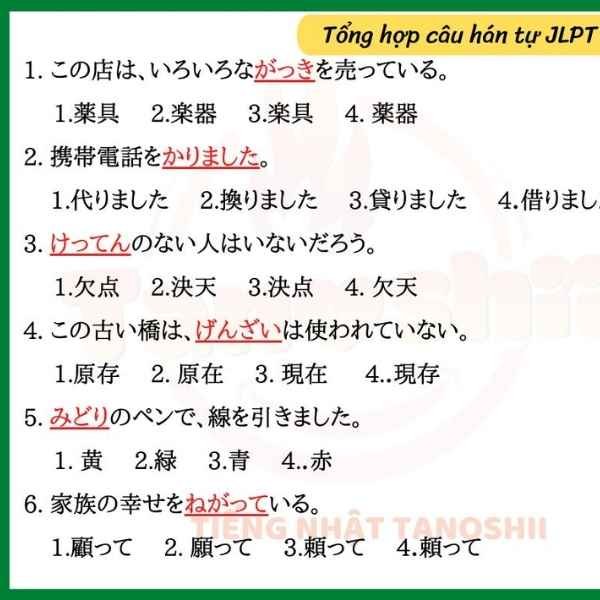JLPT N3 Syllabus Explained: Vocabulary, Grammar Rules & Kanji List
The JLPT N3 syllabus represents the bridge between basic and advanced Japanese proficiency. It marks your transition from understanding simple daily expressions (as in N4) to comprehending more complex language used in real-life situations such as work, academics, and media.
This level tests not only your vocabulary and kanji knowledge but also your ability to interpret meaning, tone, and context in conversations and written passages.
Overview of JLPT N3 Syllabus
The JLPT N3 syllabus is designed to evaluate your ability to read and listen to Japanese used in everyday scenarios, with moderate complexity.
While the official JLPT website does not release a fixed list of vocabulary or grammar topics, most learning institutions and textbooks estimate that learners should master:
- Vocabulary: Around 3,750 words
- Kanji: Approximately 650 characters
- Grammar: Intermediate-level structures connecting complex ideas
These skills build upon the JLPT N4 syllabus and serve as a foundation for advancing toward the JLPT N2 syllabus, which introduces more native-level fluency.
If you’re just starting your Japanese learning journey, explore the JLPT N5 Syllabus to understand the foundational vocabulary, grammar, and kanji covered in the beginner level.
JLPT N3 Test Sections
The N3 exam consists of three major sections that test different language skills:
- Language Knowledge (Vocabulary and Grammar):
- Covers vocabulary usage, kanji readings, conjugations, and sentence structure.
- Tests your ability to use grammar patterns naturally in various contexts.
- Reading Section:
- Focuses on your ability to read short essays, advertisements, and simple reports.
- Evaluates how well you understand the writer’s intention, tone, and key ideas.
- Listening Section:
- Measures comprehension of conversations, announcements, and discussions at a natural speed.
- Includes short dialogues, question responses, and situational audio clips.
The JLPT N3 exam time duration is approximately 140 minutes, including all sections.
You can check the complete structure on the official JLPT exam guidelines page.
Vocabulary in JLPT N3 Syllabus
To clear the N3 level, you’ll need to know around 3,700 Japanese words.
This includes a combination of nouns, verbs, adjectives, and adverbs that appear in common conversations, books, and news headlines.
Key Vocabulary Themes:
- Work and professional life
- Travel, transportation, and directions
- Emotions and opinions
- Health, environment, and education
- Public and cultural events
Practicing through JLPT N3 study material free download options or using Minna no Nihongo Intermediate I can help expand your vocabulary efficiently.
Once you’ve mastered the basics, move on to the JLPT N4 Syllabus for a deeper understanding of sentence structures and reading comprehension.

Kanji in JLPT N3 Syllabus
The JLPT N3 syllabus PDF expects learners to recognize around 650 kanji characters.
These kanji build upon the 300 from N4 and add intermediate characters used in books, newspapers, and public signs.
Common Kanji Categories:
- Verbs: 書 (write), 話 (speak), 思 (think), 持 (hold)
- Nature: 海 (sea), 空 (sky), 森 (forest), 風 (wind)
- Feelings: 楽 (fun), 悲 (sad), 怒 (angry)
- Society: 銀 (silver), 店 (shop), 病 (illness), 員 (member)
Regular kanji writing practice, flashcards, and using apps like Anki or Kanji Study are great ways to retain these characters.
For a complete overview of all proficiency levels, refer to the JLPT Syllabus which outlines every stage from N5 to N1.
Grammar Rules in JLPT N3 Syllabus
The grammar section of JLPT N3 syllabus tests your ability to form natural, flowing sentences that express cause, condition, comparison, and opinions.
Unlike N4, this level introduces more advanced connectors and formal patterns.
Important Grammar Topics Include:
- Conditional forms: ~たら, ~ば, ~なら
- Expressing reason or cause: ~ので, ~から
- Contrast and comparison: ~のに, ~ほど, ~より
- Purpose and intention: ~ために, ~ように
- Experience and completion: ~ことがある, ~てしまう
- Causative & Passive voice: ~させる, ~られる
Learners should also understand nuances in politeness, casual vs. formal speech, and how to combine clauses naturally.
JLPT N3 Reading and Listening Skills
At the N3 level, learners are expected to understand intermediate-level passages written in everyday language. Reading tasks include short essays, advertisements, and articles that require comprehension of context and implied meanings.
Reading Section:
- Ability to read medium-length paragraphs, letters, and descriptions.
- Identify the writer’s opinion and main argument.
- Understand grammar patterns in context, not isolation.
Listening Section:
- Follow natural-speed dialogues from daily life or workplace settings.
- Extract key information such as location, reason, or emotion.
- Distinguish between similar-sounding words and tones.
To strengthen listening, it’s helpful to practice with Japanese podcasts, anime subtitles, or JLPT-specific listening exercises.
Brush up on sentence patterns and expressions by reading the detailed guide on Japanese Grammar — essential for all JLPT levels.
JLPT N3 Syllabus PDF and Study Materials
While there’s no official textbook, many institutions compile the JLPT N3 syllabus PDF for learners’ reference.
Recommended study books include:
- Try! JLPT N3 (Grammar and Practice)
- Shin Kanzen Master N3 Series (Comprehensive Grammar, Reading, and Listening)
- Sou Matome JLPT N3 (Quick study approach)
You can find JLPT N3 study material free download options online or get expert-guided classes at TLS – The Japanese Language School, which provides structured learning, mock tests, and real-world conversation training for JLPT levels N5 to N1.
How to Prepare for JLPT N3 Effectively
Here are some preparation tips to master the JLPT N3 syllabus efficiently:
- Create a 3-Month Study Plan – Divide time for vocabulary, grammar, reading, and listening each week.
- Daily Kanji Practice – Write 10–15 kanji per day and revise regularly.
- Mock Tests – Take full-length sample papers under timed conditions.
- Listening Practice – Use Japanese radio, YouTube lessons, and conversation practice.
- Join a Structured Course – Enroll in trusted institutions like TLS – The Japanese Language School for professional guidance and exam-based study plans.
Learn everything about the JLPT Exam, including its structure, sections, and preparation strategies.

Exam Duration and Pattern
The JLPT exam time duration for N3 typically includes:
- Vocabulary: ~30 minutes
- Grammar & Reading: ~70 minutes
- Listening: ~40 minutes
The total duration is around 140 minutes, making time management a crucial skill during the test.
Looking for professional training? Discover top-rated Japanese Schools that offer both online and offline learning options.
Frequently Asked Questions (FAQ) – JLPT N3 Syllabus
1. What is the JLPT N3 Syllabus?
The JLPT N3 syllabus covers intermediate-level Japanese language skills, including vocabulary, kanji, grammar, reading, and listening comprehension. It acts as a bridge between the basic N4 and the advanced N2 level, requiring a solid grasp of about 3,000–3,500 words and 650–700 kanji characters.
2. What is the JLPT N3 portion?
The JLPT N3 portion includes three main sections: Language Knowledge (Vocabulary and Grammar), Reading, and Listening. It tests your ability to understand written and spoken Japanese used in everyday life and basic professional contexts.
3. How many kanji are required for JLPT N3?
For JLPT N3, learners should know approximately 650–700 kanji. These characters frequently appear in newspapers, conversations, and social media, helping you understand intermediate-level written Japanese smoothly.
4. How much vocabulary is needed for JLPT N3?
You need to know around 3,000 to 3,500 Japanese words for the N3 exam. This vocabulary includes common expressions, polite forms, and topic-based words that appear in reading and listening sections.
Ready to register? Follow the step-by-step JLPT Registration Process to ensure you don’t miss any important deadlines.
5. Is N3 difficult to pass?
JLPT N3 is moderately challenging since it moves from basic to intermediate-level Japanese. With the right study plan, consistent practice, and authentic learning resources, it’s definitely achievable for motivated learners.
6. Can I finish JLPT N3 in 3 months?
If you study intensively—about 3 to 4 hours daily—and already have N4-level knowledge, completing N3 preparation in 3 months is possible. However, most learners take 5–6 months for a balanced understanding of grammar, vocabulary, and reading skills.
7. What is the JLPT N3 exam time duration?
The JLPT N3 exam typically lasts around 140 minutes, divided into three parts: Vocabulary (30 minutes), Reading & Grammar (70 minutes), and Listening (40 minutes). Time management is crucial to complete each section effectively.
8. Where can I find the JLPT N3 syllabus PDF?
You can download the JLPT N3 syllabus PDF and study material from trusted Japanese learning websites and institutes. TLS – The Japanese Language School also provides structured guides and free downloadable resources for students preparing for N3.
Need focused preparation tips? Our guide on Mastering JLPT N5 offers practical advice and resources to ace your first level.
9. How should I prepare for the JLPT N3 exam?
To prepare effectively, focus on expanding vocabulary, mastering grammar patterns, and improving listening comprehension. Practice with mock tests, read short passages daily, and engage in real-life Japanese communication for fluency.
10. What comes after JLPT N3?
After passing JLPT N3, you can advance to JLPT N2, which focuses on complex grammar structures, advanced vocabulary, and professional-level comprehension. N3 serves as a strong foundation for reaching business-level proficiency in Japanese.
Prefer studying from home? Join an Online Japanese N5 Course designed for beginners to build strong basics with expert support.
Conclusion
The JLPT N3 syllabus opens the door to real-world Japanese understanding and communication.
It is the perfect milestone for learners looking to work, study, or live in Japan with confidence.
By mastering approximately 3,700 words, 650 kanji, and key grammar rules, you’ll be well-prepared for intermediate-level fluency.
Whether you’re self-studying or joining a professional course, consistent practice and guided learning will help you achieve your JLPT goals.
Enroll Now for Expert JLPT Preparation
Enhance your Japanese language skills with professional guidance from TLS – The Japanese Language School, one of Delhi’s most trusted institutes for JLPT preparation. With structured lessons, native-style teaching, and personalized support, learners can confidently master all JLPT levels from beginner to advanced.
Call Us: +91 8700956038
Address: 2/81-82, Ground Floor, Lalita Park, Laxmi Nagar, New Delhi – 110092
Email Us: tls@teamlanguages.com
Start your journey toward Japanese fluency today — enroll now and prepare to excel in the JLPT N3 syllabus with comprehensive, result-driven training.












Leave Your Thought Here